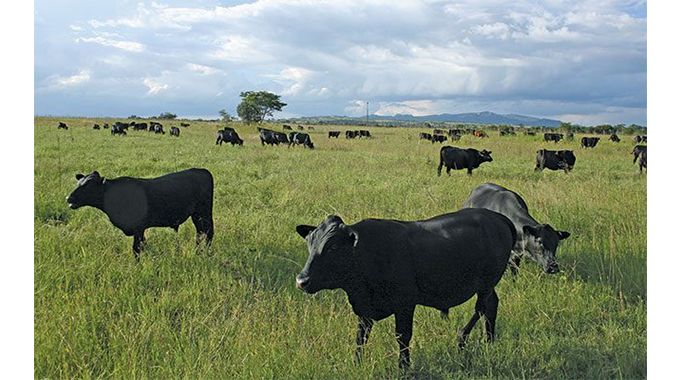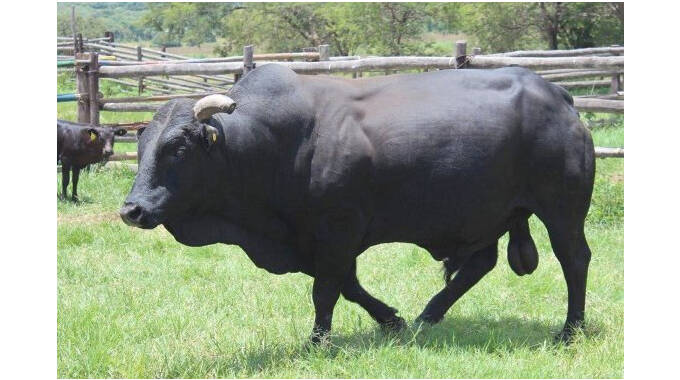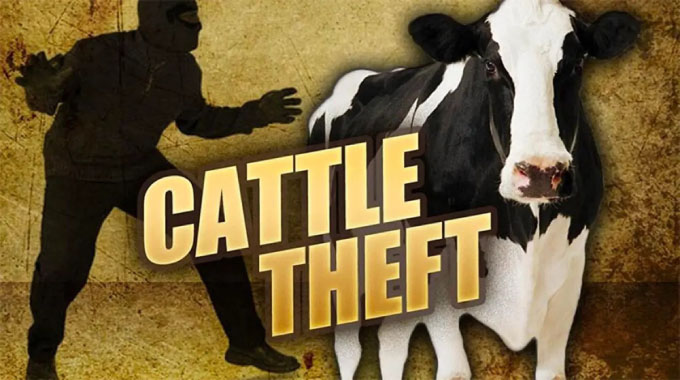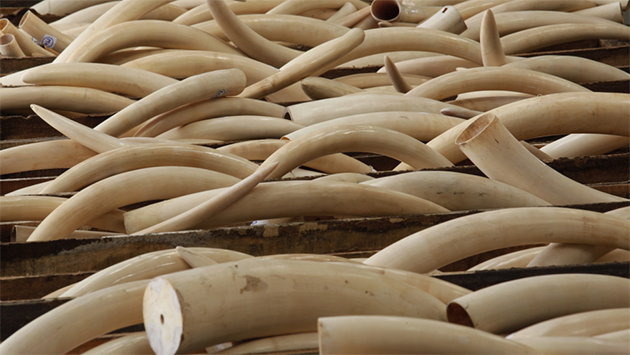Zimbabwe’s Mashona cattle breed: small in stature, big in value

By Annelie Coleman
ZIMBABWE’S indigenous Mashona cattle are renowned for their outstanding productivity and ability to survive under even the most extreme conditions. Maree Osborne, chairperson of the Mashona Cattle Society of Zimbabwe, spoke to Annelie Coleman about this remarkable breed of beef cattle.
Zimbabwe’s indigenous Mashona, a Sanga-type cattle breed, has evolved over millennia into a hardy, highly adaptable and economical contender in the African beef production arena, says Maree Osborne, chairperson of the Mashona Cattle Society of Zimbabwe.
Following the decimation of the Shona people’s cattle herds as a result of rinderpest in the late 1890s and East Coast fever in the early 1900s, Angoni cows were mated with Mashona bulls, resulting in the Mashona breed as it is known today.
A herd book was established in 1954, after a decade of selection for beef production. Mashona are usually either black or red, and most are now polled.
“Working with Mashona cattle has given me a huge amount of pleasure over the years. The breed’s small stature plays a crucial role in its survivability, fertility and production efficiency under extensive farming conditions,” explains Osborne.

In its breed-evaluation research trial from 1974 to 1900, the largest and longest of its kind in Africa, Zimbabwe’s Matopos Research Station found that the Mashona far outperformed all other breeds in the country in terms of beef live weight per hectare.
According to Osborne, the Mashona’s docility and relatively small body size facilitate easy handling and management. An added benefit of the breed is that the females graze in groups, which allows for the more efficient use of bulls during the breeding season.
The females are also highly protective of the calves, and when the dams need to graze, a few matrons will guard their calves in a nursery area while they do so, and will warn the rest of the herd of danger.
High rainfall
Osborne and her family run the Bluegums Mashona Stud near Macheke in Zimbabwe’s Mashonaland East province. Macheke is located in that country’s summer rainfall area, and Bluegums farm receives an average of around 800mm of rain every year. The family runs a mixed farming operation on 400ha.
Osborne and her husband John purchased their first purebred Mashona cattle in 1996 after he suggested they explore the potential of indigenous Zimbabwean breeds.
“At that time, the Mashona Cattle Society of Zimbabwe was flourishing. However, after 2000, the society and breed numbers began to decline as a result of the disruptions caused by land reform.
It was not until 2011 that we saw an opportunity to reignite the society. Today, we have 10 registered breeders, including three research stations, and interest in the breed and in growing breed numbers is on the rise,” says Osborne.
According to her, the Mashona’s adaptive traits make it highly efficient in terms of veld utilisation and its growth rate on veld. And the current trend towards fattening cattle on the veld spells good news for the breed. Thanks to its small size and mobility, the Mashona is able to forage even when the temperature and ultraviolet (UV) radiation levels are very high.

From left: John and Maree Osborne with their daughter and son-in-law Alisa and Peter Zimmermann, and granddaughter and grandson, Gracie and John Zimmermann.
They also make use of a wide range of feed sources according to the season. These include fruit, pods, newly fallen leaves, and legumes, which boost their protein intake.
Bluegums farm
There are a total of 331 animals on the Osbornes’ farm, including a small crossbred dairy herd. Rainfall was sporadic this summer and, given the present number of livestock, grazing is well below the levels needed to see the herd comfortably through the coming winter.
But the farm is at an advantage with the Mashona. The breed’s adaptability and ability to survive and maintain production levels even under harsh conditions make it superior to larger breeds, as the cows require less maintenance.
“Our daughter and son-in-law, Alisa and Peter Zimmerman, lease Bluegums land for cropping, with 50ha planted to tobacco, 20ha to maize, 60ha to soya bean, and 80ha to barley as a winter crop. We use the rest of our land for the cattle,” says Osborne.
“We have a fully ring-fenced farm and are able to leave the cattle out at night. Stockmen keep records of the mating and count the cattle every day. Grazing conditions are also monitored closely, and the cattle moved accordingly. The vlei areas on the farm form an important part of our grazing,” she adds.
To counteract the eventuality of seasons with limited grazing, the Osbornes intend to clear much of the paperbark thorn trees (Vachellia sieberiana).
“This species of acacia is prolific in our area, and a balance needs to be kept between the trees and the grass. This involves trimming off the lower branches to expose the grass to more sunlight beneath the trees, and also thinning out the trees where they are too numerous,” explains Osborne.
“The cattle eat the leaves from the felled trees, and the branches are left in situ to give the grass time to establish and seed. The encroachment of Lantana, which is toxic to animals, is an ongoing issue, and plans are under way to introduce systems to better control the weed this year.
“Legumes, on the other hand, are a key component of the grazing, and we use three species of Desmodium to complement the grass. We find that the cattle spread these plants quite successfully. We’re still experimenting with legumes, and while they aren’t indigenous to the area, they seem to be thriving here.
“Maize stover and barley hay are used as supplements. We also operate a sunflower mill, and use the sunflower seed cake in winter, along with barley hay and molasses.”
Disease management
Bluegums’ cattle were previously hand-sprayed and dressed with tick grease. Recently, however, the Osbornes installed a spray race.
Unfortunately, due to the prevalence of January disease (particularly a new strain) in the area, a more thorough method of drenching is now required. The cattle are therefore dipped on a weekly basis in summer, and every two weeks in winter, depending on the conditions.
Bulls, cows and heifers are inoculated against vibriosis, and all calves against quarter evil. The entire herd is inoculated against lumpy skin disease every year, and female calves are also vaccinated against brucellosis.
Since the Mashona has a thick, movable hide, a well-developed panniculus carnosus (a thin muscular layer attached to the skin) and sensitive pilomotor nerves, its hide reacts rapidly to the slightest irritation. This makes it highly resistant to damage from ticks and other biting insects, as well as infection with tick-borne diseases.
The high level of sebum excreted from glands in its skin also helps to deter insects. This sebum, in combination with the Mashona’s pigmented hide, also serves to protect it from the damaging effects of the high UV radiation in Zimbabwe.
Reproduction and longevity
According to Osborne, Mashona cows are highly productive, excellent mothers and produce a good milk supply. She adds that they are peerless when it comes to weaner output per unit weight of cow on veld.
Calving difficulties are practically unheard of in purebred cows. Even in a crossbreeding concern, the relatively low birthweight appears to be maintained by the dam’s influence.
On Bluegums farm, two-year-old bulling heifers are put to a bull in November. The females in the main breeding herd are placed in single-sire breeding groups in mid-December, and the bulls are removed in mid-March.

Mashona bulls have high libido, and their scrotums are adapted to maintain the optimal testicular temperature under subtropical conditions. The Bluegums bulls are checked by a veterinarian for semen quality before the start of each season.
Pregnancy testing takes place six weeks after the bulls have been removed. Empty cows are sold, and the buyers are given their full breeding histories, which include number of calves, age at first calving, and intercalving period. Cows past breeding age are slaughtered.
Mashona cows are known for their longevity, and a number of Bluegums’ cows have produced 11 calves in their breeding lifetimes. The stud maintains a pregnancy rate of 80% to 85%.
At birth, calves are weighed (the average is 25kg) and given ear tags that identify their sires and dams. HerdMaster software is used to record all animals.
Weaning is done in batches when the calves are around 200 days old, and the average weaning weight is 150kg.
Calves are usually dewormed at the height of the rainy season in January and February, and then again at weaning.
Selection
Potential stud bulls are identified at weaning and inspected at regular intervals. Promising young bulls are kept separately and their growth continually monitored.
For the Bluegums stud, the ideal Mashona bull is muscular, small-framed, and barrel-like in appearance. Males that don’t make the grade are castrated and sold.
“We replace around 20% of our heifers every year. Our Mashona females should be neat, compact, small-framed, barrel-like, and capable of carrying plenty of meat and fat.
“The average weight of adult cows varies between 350kg and 425kg, while the adult bulls weigh between 450kg and 600kg,” says Osborne.
Article originally published by Farmers’ Weekly magazine of South Africa. Annelie Coleman represents Farmer’s Weekly in the Free State, North West and Northern Cape. Agriculture is in her blood. She grew up on a maize farm in the Wesselsbron district where her brother is still continuing with the family business. Annelie is passionate about the area she works in and calls it ‘God’s own country’. She’s particularly interested in beef cattle farming, especially with the indigenous African breeds. She’s an avid reader and owns a comprehensive collection of Africana covering hunting in colonial Africa, missionary history of the same period, as well as Rhodesian literature.












Comments